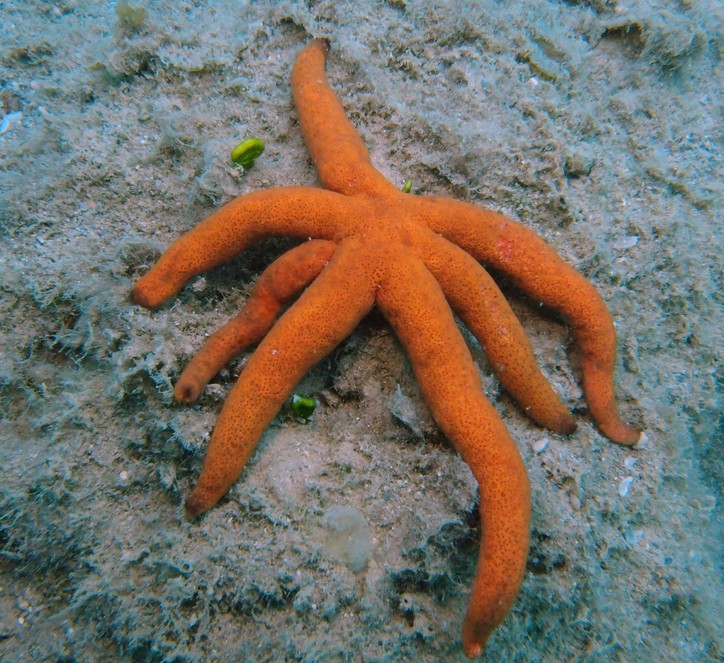ECHINASTER LUZONICUS - (GRAY, 1840)
Echinodermata (Phylum) > Asterozoa (Subphylum) > Asteroidea (Class) > Spinulosacea (Superorder) > Spinulosida (Order) > Echinasteridae (Family) > Echinaster (Genus)
Etoile verruqueuse, Luzon seastar,
Répartition
Indopacifique oriental - Habitat: le récif entre 5 et 25m de profondeur - Taille: 5 bras de section circulaire (elle peut en avoir jusqu'à 7), rouge orangé, peut atteindre 22cm de diamètre.
Espèces ressemblantes
Dans leur forme orange les échinodermes suivant peuvent être confondus avec :
Nardoa galatheae (Lütken, 1865)
Leiaster leachi (Gray, 1840) - L'étoile de mer bordeaux est de couleur rouge foncée uniforme avec de longs bras ronds, flexibles et lisses dont les extrémités peuvent être plus foncé. Elle peut avoir six bras et atteindre un diamètre de 60cm.
Synonymes
Echinaster affinis (Perrier, 1869)
Echinaster eridanella (Muller & Troschel, 1842)
Echinaster multipapillatus (Hoffman in Rowe, 1974)
Echinaster purpureus (Domantay & Roxas, 1938)
Henricia multipapillata (Hoffman, 1874)
-------------------------------------------
Sea star with normally 5 arms (can have up to 7 legs), conical and with blunt tip. The background colour is highly variable, pink to yellow, orange, red, brown. Small, regularly spaced papillae on the dorsal side. 15 cm diameter. Max 22 cm diameter. Encountered in bay, lagoon or in the back reef. In its orange form confusion is possible with Leiaster speciosus, having cylindrical arms and papillae in a rectangular pattern, or with Nardoa galatheae, having a mesh-like pattern.
Associated organisms, Often host for the commensal shrimp Periclimenes soror, sometimes for the platyctaene Ctenophore Coeloplana astericola, Doridicola echinasteris (Humes, 1975) (parasitic: ectoparasitic).
